Evolving Engineering Practices in Scrum
Learn how evolving engineering practices like Feature Flags, TDD, and refactoring enable smoother Sprint workflows and reduce technical debt in Scrum …
The process of delivering usable working software products to customers, including planning, development, testing, and deployment.


Product Delivery encompasses the entire process of delivering usable, working software products to customers, integrating planning, development, testing, and deployment into a cohesive workflow. This concept is crucial as it enables teams to consistently deliver value in a predictable and sustainable manner, ensuring that products meet customer needs and expectations. By focusing on the end-to-end delivery process, organisations can enhance collaboration across cross-functional teams, streamline workflows, and reduce cycle times.
Effective Product Delivery relies on principles from Agile, Lean, and DevOps, fostering a culture of continuous improvement and responsiveness to change. It emphasises the importance of feedback loops, allowing teams to adapt quickly based on customer insights and market demands. This systemic approach not only enhances the quality of the product but also builds a resilient organisational framework that supports long-term success.
By prioritising Product Delivery, organisations can create a robust environment where innovation thrives, and teams are empowered to take ownership of their work. This leads to higher employee engagement and satisfaction, ultimately driving better business outcomes and customer loyalty. The focus on delivering value through a well-defined process ensures that organisations remain competitive and responsive in an ever-evolving landscape, making Product Delivery a foundational element of modern product development.
Learn how evolving engineering practices like Feature Flags, TDD, and refactoring enable smoother Sprint workflows and reduce technical debt in Scrum …
Explores common DevOps challenges to rapid delivery, highlighting automation, feedback loops, mindset shifts, and compliance for achieving agile, …
Explains how slow product release cycles delay feature delivery, risk losing relevance, and create competitive disadvantages, highlighting the …
Multitasking reduces team productivity. Learn how focusing on finishing tasks, limiting work in progress, and value-based prioritisation boosts …
Manage Agile projects effectively with Azure Boards. Track work, optimise planning, and improve team collaboration.
Explains how short-lived topic branches in source control improve software quality, enable modularity, speed up integration, and support agile, …
Martin is in EST for 6 months and available for hands-on consulting in North America. This month’s spotlight: How tracking estimation accuracy is …
Measuring individual cycle time in Kanban misleads teams, hides real bottlenecks, and harms flow. Focus on system-wide metrics like PCE, WIP, and …
Rollback is often riskier than rolling forward, especially for stateful apps. Safer deployment relies on progressive delivery and fail-forward …
Explains why modern software teams avoid branch promotion, using continuous integration, feature flags, and production-like testing to streamline …
Explains why consistent delivery of usable increments is essential in Scrum, highlighting the Scrum Master's accountability for ensuring transparency, …
Explains how Kanban visualises workflows, tracks metrics, and supports continuous improvement, helping teams identify bottlenecks and enhance …
Mentoring program for developers and teams to master Agile, DevOps, Kanban, and evidence-based practices, fostering engineering excellence and …
Technical debt requires leadership investment to resolve; without support for automation and quality improvements, continuous delivery is not …
Scrum Masters are most effective when they combine leadership skills with technical, business, and organisational mastery to support teams, Product …
Stop testing quality in, start building it in. Learn how shifting left, automation, and fast feedback loops drive engineering excellence in modern …
Many organisations cite software complexity as a barrier to continuous delivery, but real obstacles are technical debt and lack of investment in …
Enhance forecasting in Agile and Scrum. Use empirical data to predict delivery timelines, manage risk, and optimise value delivery.
Explores how lacking developer control over production, telemetry, and deployments undermines DevOps, leading to fragile automation and failed …
Explains how Windows OS updates shifted from infrequent, risky releases to safe, staged rollouts using ring-based deployment and real-time user …
Improve clarity and readiness with Backlog Refinement. Ensure work is well-defined, prioritised, and ready for execution.
Explores why true organisational agility depends on empowering teams with agency, not just adopting frameworks like Scrum, Kanban, or DevOps, to …
Working software is the tangible, functional output produced during a Sprint, representing a concrete artifact that delivers value to customers.
Learn how to use Kanban metrics like cycle time and throughput to improve team predictability, make accurate forecasts, and deliver consistent project …
Explains how fragmented automation and tool silos harm software delivery, and advocates for unified engineering systems and platform engineering to …
Explores how agile teams can achieve predictable software delivery through quality focus, effective release planning, and continuous improvement, …
Scrum Teams uphold, not lower, quality by strictly following and evolving the Definition of Done, ensuring predictable releases and reducing technical …
Transform legacy engineering with a proven, step-by-step approach, learn how to automate, adapt, and build a resilient, modern DevOps culture.
Unlock your team's true potential, discover why a powerful definition of done drives real business impact, customer value, and lasting competitive …
Stop confusing acceptance criteria with definition of done, learn the crucial difference to boost quality, speed, and trust in your agile delivery.
Explores how technical excellence in Agile development reduces risk, prevents technical debt, and boosts product quality and delivery speed through …
Explains how Scrum supports continuous flow and agility by prioritising Sprint Goals, Done increments, CI/CD practices, and outcomes over rigid sprint …
Applying software engineering principles to ensure scalable and reliable systems.
Explains why staggered iterations harm software delivery, increasing technical debt, and recommends cross-functional teams, test-first, and working …
Explores how Azure DevOps shifted from slow, two-year releases to rapid, continuous delivery, highlighting the benefits of fast feedback, agility, and …
Professional Scrum Teams prioritise software quality, accountability, and continuous improvement, ensuring each release is reliable, defect-free, and …
Learn how NKD Agility supports organisations in building engineering excellence through modern practices like performance engineering, testing in …
Explains the risks of the pick-n-mix branching anti-pattern in source control, its impact on code quality, and recommends feature branching and …
Explores how increasing deployment frequency, stable environments, and fast feedback loops improve software delivery, reduce time to market, and align …
Explains why Sprints are valuable even with continuous delivery, highlighting benefits for planning, feedback, communication, and predictability in …
Explains how Scrum Sprints are primarily for planning, not fixed delivery, and discusses aligning delivery schedules, continuous deployment, and …
Lack of a clear, enforced Definition of Done leads to hidden risks, unreliable forecasts, and eroded trust in delivery, undermining predictability and …
Explores code review practices for quality assurance, highlighting automation, pull requests, and early defect detection to ensure high-quality, …
Explains how DevOps and Agile work together to enable continuous delivery, rapid feedback, and customer value in software development and product …
Explains why true agility requires end-to-end automation and short feedback loops, not just Agile teams, to maximise value and efficiency for …
Explores how automation in testing, deployment, and validation streamlines development, reduces technical debt, and builds confidence for teams and …
Explores how frequent code deployments improve code quality, reduce technical debt, enable faster feedback, and support iterative, user-focused …
Explains how to create, apply, and improve a Definition of Done (DoD) in Scrum to ensure software quality, transparency, and consistent delivery of …
Explains how to set up a scalable release pipeline using Release Management in Visual Studio 2013, covering continuous release, feedback environments, …
Explains how defining quality standards, acceptance criteria, and automation in software delivery leads to predictable outcomes, fewer bugs, and …
Undelivered software provides no value. Frequent, iterative releases reduce risk, cost, and failure, enabling faster learning and real user impact in …
Learn how agile metrics like innovation rate, product index, usage index, and version adoption help identify waste and improve ROI by focusing on …
Failing to deliver a usable product each agile iteration leads to lost trust, technical debt, poor adaptability, misaligned expectations, low morale, …
Unreleased features create hidden costs and risks. Regular software delivery reduces failure rates, rework, and missed opportunities, ensuring real …
Explores how hypothesis-driven engineering helps teams maximise product value by testing ideas, measuring outcomes, and learning from failure to guide …
Explores how breaking features into small experiments boosts software delivery, enabling teams to deliver more features, reduce risk, and improve …
Explains how to automate and streamline software release management using Team Foundation Server 2012, Lab Management, and Octopus, focusing on build, …
Intensive five-day course for software developers covering Scrum, Visual Studio 2010, .NET, and Agile practices through hands-on team sprints and …
Explains Scrum’s four key value areas, current value, unrealised value, ability to innovate, and time to market, for data-driven product and …
We partner with businesses across diverse industries, including finance, insurance, healthcare, pharmaceuticals, technology, engineering, transportation, hospitality, entertainment, legal, government, and military sectors.

Teleplan

Cognizant Microsoft Business Group (MBG)

Healthgrades

MacDonald Humfrey (Automation) Ltd.

Workday

Boeing

SuperControl

Higher Education Statistics Agency

Big Data for Humans

Flowmaster (a Mentor Graphics Company)

Milliman

Illumina

Lean SA

Kongsberg Maritime

Bistech

Graham & Brown

Epic Games

Slaughter and May

Washington Department of Transport

Royal Air Force

New Hampshire Supreme Court

Department of Work and Pensions (UK)

Washington Department of Enterprise Services

Nottingham County Council

ProgramUtvikling

Flowmaster (a Mentor Graphics Company)

Sage

Jack Links

Xceptor - Process and Data Automation

Akaditi